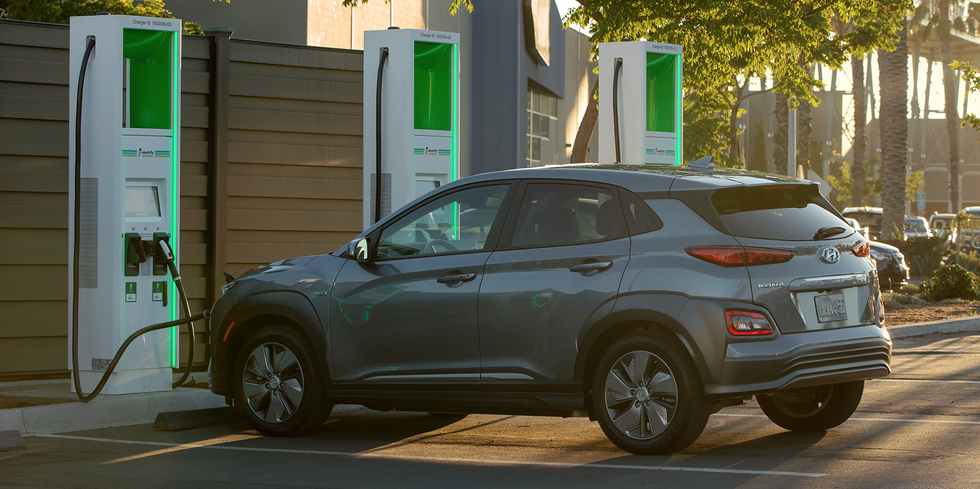Four fast charging stations will make up the first interprovincial route of charging stations in the country. There are located on two roads that connect Azuay with Cañar and Guayas.
The four stations that will form the first electric charging line linking Cuenca and Guayaquil will be located along 158 kilometers.
They are part of a project developed by the University of Cuenca and the Centro Sur Regional Electric Company.
The first fast charging station has been in operation since April 2022 and is located in the yards of the Electric Company.
The second and third stations were inaugurated on August 4th. They are located at:
- Kilometer 65 of the Cuenca-Molleturo-El Empalme road.
- The exteriors of electrical substation 50 in La Troncal, on the Durán-Tambo road.
In September the last point will be enabled, at the University of Cuenca, in the center of the Azuay capital.
These infrastructures allow an electric vehicle to be charged in 20 to 40 minutes, unlike conventional stations, which require between six and eight hours, explains Wilson Núñez, Executive President of the Electric Company.
The points where the charging stations are located were selected after various analyzes and tests.
Although most electric vehicles today have a minimum range of 400 kilometers (which would make a roundtrip between Cuenca and Guayaquil), in practice energy consumption is much higher on slopes, explains Rodrigo Sempértegui, Director of the Laboratory of Alternative Energies and Electric Mobility of the University of Cuenca.
For example, on this route, via the Cuenca-Molleturo-El Empalme road, “with the climbs that there are, a car with a 400-kilometer range can cover a third of that, about 130 kilometers,” he says.
According to the tests carried out, the trip from Cuenca to Guayaquil can be done with a charge at the point of departure and, possibly, a recharge in Tamarindo, where the second station is located.
A forecast for the future
The idea of having electric charging lines in the country was born in the Laboratory of Alternative Energies and Electric Mobility of the University of Cuenca. Its researchers set out to contribute to decarbonization with different projects.
“In Ecuador, about 42% of CO₂ comes from transportation. If we manage to reduce that value, we would be doing the environment a great favor… and we believe we can do it,” said Sempertegui
The academic says that the transition to electromobility will not be in the short term, but that it is necessary to create the conditions with a view to what may happen in 10 or 15 years.
Before 2025, the vehicles that join the fleet of public and interprovincial transport throughout the country must be exclusively electric, as established by the Energy Efficiency Law, approved in 2019.
“Businessmen do not bring electric vehicles [to Ecuador] because there are no charging stations in the country and investors do not install them because there are no cars. At the University we decided to take that first step,” explained Sempértegui.
Although the use of electric vehicles is still minimal, the Centro Sur Electric Company decided to bet on the idea proposed by the University: create the conditions so that more people are encouraged by electromobility.
The institution invested some $300,000 in the adaptation of the facilities to guarantee between 380 and 400 volts that the fast-charging stations need.
Each one allows up to three vehicles to use them at the same time.
Private companies have joined this proposal, such as Hotel Zahir and Supermaxi, which installed slow-charging charging stations for their customers.
For now, users do not pay for the service, which is subsidized by the Electric Company.
“We want to encourage the purchase of electric vehicles, later we will see the charging mechanisms, when the transition is more advanced,” explains Wilson Núñez, Executive President of the Electric Company.
The project began in Cuenca, but the idea is to have electric charging lines on the Quito-Cuenca and Quito-Guayaquil roads, where studies are already being carried out.
Pioneer in electric mobility
The University of Cuenca and the Centro Sur Regional Electric Company agree on one goal: to turn Cuenca into a pioneering city in electromobility.
In 2019 it was the first to have a charging station and it also has the first electric mass transportation system: the tram.
The Municipality has a project to incorporate a fleet of electric buses, with the support of the German Society GIZ, through a debt swap that the Ecuadorian government has with the German.
And there have already been conversations with those in charge of Build Your Dreams (BYD) and Skywell, but the purchase has not yet been finalized.
Some 20 electric vehicles of the Dongfeng, Skywell, KIA, Tesla brands circulate in the Azuay capital, mainly.
On a national scale, thru May 2022, 128 electric units have been sold, 18% more compared to the same period in 2021, according to the report of the Chamber of the Ecuadorian Automotive Industry.


0 Comments